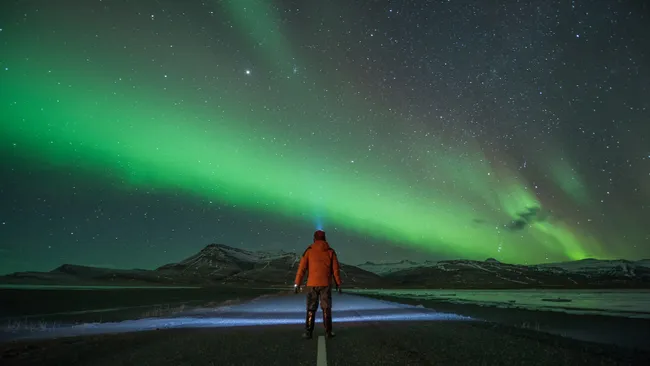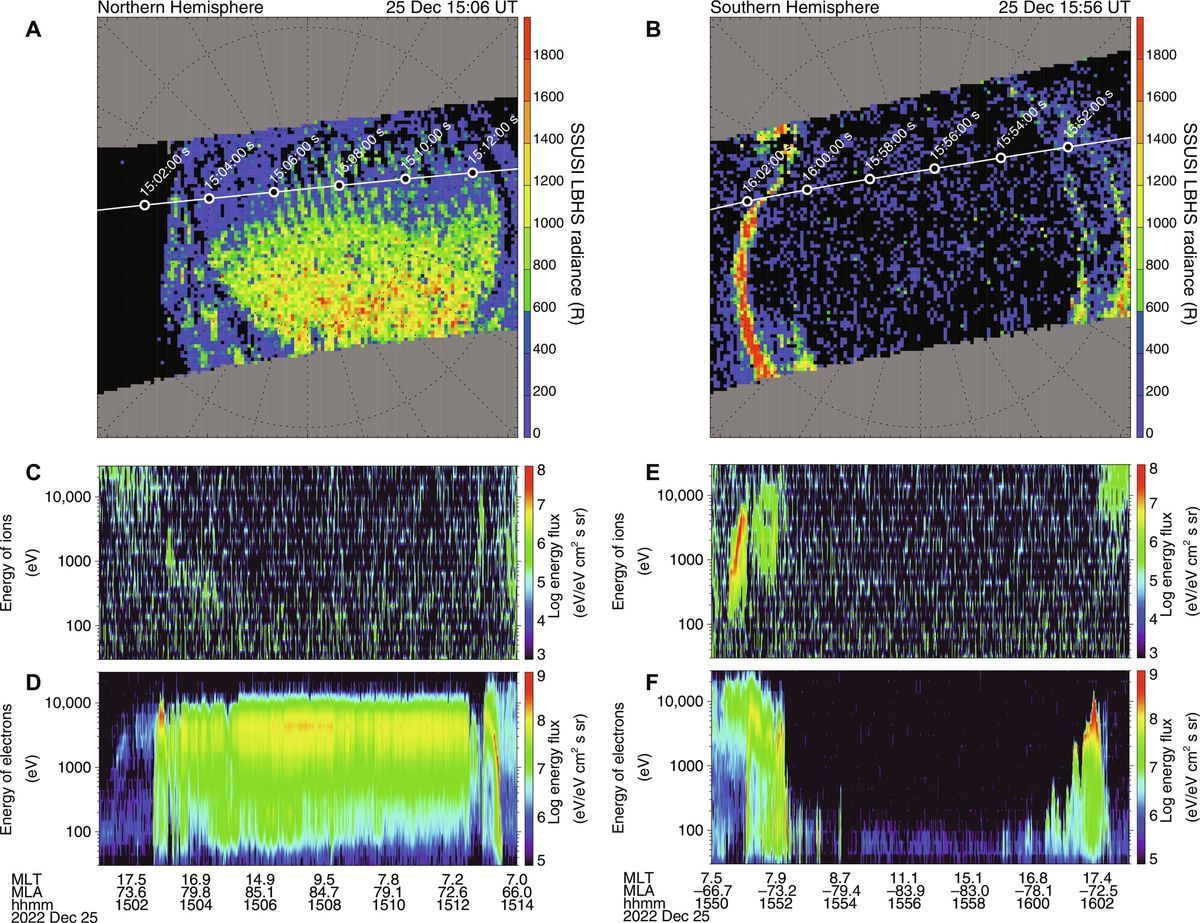A remarkably smooth and puzzling Christmas Day aurora observed over the Arctic in 2022 was the result of a 'rainstorm' of electrons direct from the sun, says Japanese and US-based researchers.
It is the first time that a rare aurora of this kind has been seen from the ground, and it came at a time when the gusts of the solar wind had almost completely dropped off, leaving a region of calm around the Earth.
Imaged by an All-Sky Electron Multiplying Charge-Coupled Device (EMCCD) camera in Longyearbyen in Norway, the aurora was a faint, featureless glow that spanned 2,485 miles (4,000 kilometers) in extent.
It had no structure, no pulsing or varying brightness. No type of aurora like it had ever been seen from Earth before.
The satellites saw the aurora from above, finding that it had all the hallmarks of a rare type of aurora called polar rain aurora, which had only ever been seen from space before.
Source
It is the first time that a rare aurora of this kind has been seen from the ground, and it came at a time when the gusts of the solar wind had almost completely dropped off, leaving a region of calm around the Earth.
Imaged by an All-Sky Electron Multiplying Charge-Coupled Device (EMCCD) camera in Longyearbyen in Norway, the aurora was a faint, featureless glow that spanned 2,485 miles (4,000 kilometers) in extent.
It had no structure, no pulsing or varying brightness. No type of aurora like it had ever been seen from Earth before.
The satellites saw the aurora from above, finding that it had all the hallmarks of a rare type of aurora called polar rain aurora, which had only ever been seen from space before.
Source























